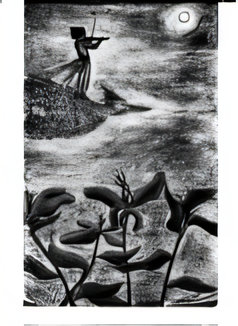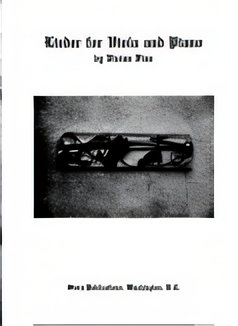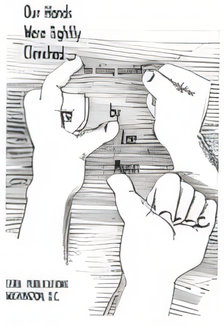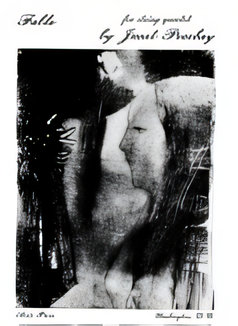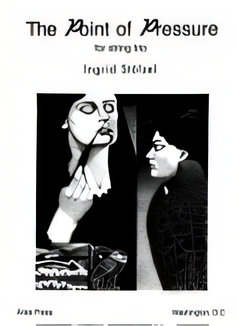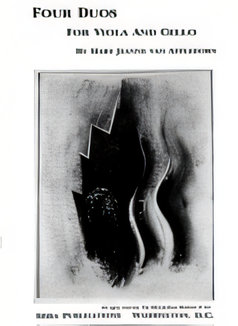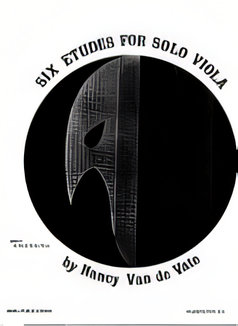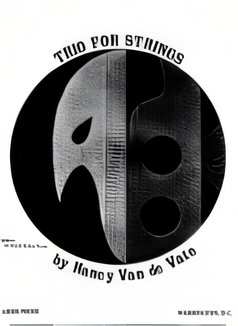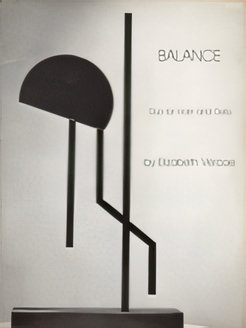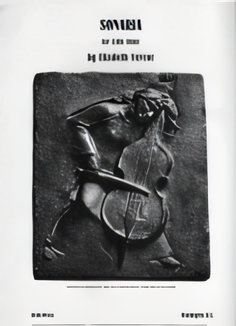Strings
Arakaki, Renee
Precipice for solo violin
Highly virtuosic with double-stopped slides, syncopations and motoric rhythm, Precipice incorporates unusual timbres on the violin from harmonics and half- stopped glissandi to sub-tones (rough, edgy sounds one octave below the open string produced by bowing with extreme pressure on the first node).
The title reflects the musical ideas of the piece on several levels: the rough timbres and angular lines in the music, the intensity and precariousness in the execution of a technically challenging piece, and influences from rock and roll.
The score is printed online here.
Fine, Vivian
Lieder for Viola and Piano
Titles appear at the end of each movement: The Balcony, Moon-Stream, The Song of the Trout, Jewels, In the Garden of the Crucifixion, and Transfiguring Night.
Written in 1979, this six movement piece is dedicated to Jacob Glick. The composer writes:
“The inspiration for Lieder for Viola and Piano comes from Hugo Wolf, and, in The Song of the Trout, from Schubert. Motifs from these composers are used, but never literally. The intent was to convey the composer’s involvement with the lyric and dramatic elements of traditional lieder in her own language.”
Note: Vivian Fine’s Lieder for Viola and Piano along with other works can be found on Petrucci and can be downloaded from that site.
Munn, Zae
Our Hands Were Tightly Clenched for string quartet
Our Hands Were Tightly Clenched was written in 2003 for the La Catrina String Quartet, a graduate student quartet from Western Michigan University. The phrase “our hands were tightly clenched” is a metaphor for sustained, embedded tension and anger, and the material of the piece explores the rise of this tension and ways in which its persistence might be diffused or relaxed.
A recording may be heard on the composer’s website.
Peachey, Janet
Fable for string quartet
The piece was written in 1987 and premiered the same year at a concert sponsored by the National Capital Area Composers Consortium.
Fable has had several outstanding performances by the Eakins Quartet. The piece is in one movement. A slow introduction gives way to an energetic motive leading to a climactic point. The final section is a soft chorale followed by a return of earlier motives.
A copy of the score is available at the Princeton University Library.
Polin, Claire
Freltic Sonata for Violin and Piano
“Freltic” is an elision of the words French and Celtic, referring to materials used in the outer movements.
The first movement, Virelai-tions, begins with an Ojibway Indian folk tune treated canonically at first and later used as a chaconne line for five variations on Machaut’s melody, Douce Dame. The second movement, Bariolage, is a virtuosic display. Breiz, the third movement, is based on a Breton rhythmic pattern with fluctuating major-minor colors and an exciting ending. The piece is performed from score.
A recording of the music can be heard on SoundCloud.
Stölzel, Ingrid
Impulse for string quartet
The three movements are: Electrical Impulse, Mechanical Impulse, and Nerve Impulse
The composer writes:
“The simplest definition of the word impulse is the transmission of information from one place to another. In this information age, these impulses (electrical and mechanical) are as immediate as the air we breathe. Our own internal impulses (nerves) work to prioritize this increasingly frantic transfer. Musically, the pulse that lives in a composition is also a movement of information. The composer impulsively responds to an idea in her brain and that idea is then moved forward in time and space to an ear attached to another brain–the listener. Music is, by its nature, an impulsive act, not visible to the eye, but understood by all who listen.”
The Point of Pressure for string trio
The three movements are: Electrical Impulse, Mechanical Impulse, and Nerve Impulse The composer writes: The composer writes: “The word ‘pressure’ is a word which can describe both a physical sensation and a state of mind. Dual Meanings are at the heart of this piece. The pressure of the act of composing, the pressure of the fingers upon the strings. The pressure of the performers to play the music well, the pressure of the sound upon the eardrum. The pressure of the very act of being conscious, the pressure of the blood. Using persistent rhythms and repetitions, the composition begs both questions: what is the point when the pressure is first perceived by the brain and what is the point when it becomes unbearable to the body.”Van Appledorn, Mary Jeanne
Four Duos for Viola and Cello
“This work is a significant addition to the slim repertoire of duos for viola and cello.” (The Violexchange)
Dedicated to Susan Schoenfeld and Arthur Follows, Four Duos was awarded First Prize in the Texas Composers’ Guild Contest. It was premiered in and recorded on Opus One in 1989.
The movements are brief and are marked: Lento, Allegro, Moderato, and Presto.
Introduction and Allegro for violin and organ
Inscribed to Kirsten Yon and Sigurd Ogaard, Introduction and Allegro (2007) for violin and organ is a brief and straightforward piece of moderate difficulty.Van de Vate, Nancy
Six Etudes for Solo Viola
“This work is a significant addition to the slim repertoire of duos for viola and cello.” (The Violexchange)
Composed in 1969, in Knoxville, Tennessee, the Six Etudes were premiered at Lincoln Center in 1974 by Jacob Glick. They are straightforward twelve-tone works in which pitch is the only element serialized.
The set begins and ends with slow, lyric pieces; the fourth etude is also slow. The second and third etudes are fast and somewhat playful, and the fifth exploits irregular rhythmic groupings and shifting accents. Composed in the classical etude tradition of free-form works built on limited motivic/melodic material, these pieces are technically demanding and suitable for concert presentation. (Notes by the composer.)
The score is available from the American Composers Alliance.
Suite for Solo Violin
“This work is a significant addition to the slim repertoire of duos for viola and cello.” (The Violexchange)
“Most impressive [is] the skillfully written Violin Suite…” (American Record Guide)
The Suite was begun at Yaddo, the artist’s colony in Saratoga Springs, New York, in July, 1974 and completed in Knoxville, Tennessee in May, 1975, after having been set aside for some months. It was premiered at the New School in New York City in December, 1976 by Martha Caplin.
The work is in five contrasting movements, all of which are free forms. The first, fourth, and fifth movements employ primarily conventional playing techniques, and each is unified by the use of recurring motives or melodic material. The second and third movements are somewhat more avant-garde and employ special effects to achieve their coloristic aims. The slow, lyric fourth movement is a strict twelve-tone composition; however, no other elements are serialized. (Notes by the composer.)
The score is available from the American Composers Alliance.
Trio for Strings
“calculated simplicity” (American Record Guide)
Van de Vate’s Trio continues the tradition of Gebrauchsmusik considered to have begun with Bach and eloquently articulated in our own century by Hindemith and Krenek. The three-movement work was composed in 1974 for the 1975 Stowe Chamber Music Competition (USA), which sought works simple enough to be sight-read by amateur musicians. It was begun in Knoxville, Tennessee and completed at Yaddo. Winning Third Prize among almost two hundred entries, it was premiered in Stowe, Vermont in August, 1975.
The score is available from the American Composers Alliance.
Vercoe, Elizabeth
Balance: Duo for Violin and Cello
The Duo is in three movements: a fast opening movement with Bartokian string effects, an atmospheric slow movement of theme and variations, and a very fast and largely contrapuntal finale.
The score is available from the American Composers Alliance.
Sonaria for Cello Alone
“skillfully exploits the qualities and possibilities of the instrument” (The Jewish Advocate)
Sonaria (1980) is one of a series of introspective pieces for unaccompanied instruments. Each of these pieces makes some use of special effects on the instrument in order to create the wanted atmosphere.
Here, there is a recurrent low plucked pedal tone and a brief, nostalgic theme that recurs ponticello and in harmonics. Since the music was written as commentary on an imagined dance/mime either live or filmed, the listener is invited to “screen” those private visual images sometimes evoked by music instead of hastily suppressing them and trying to “pay attention.” The mood of the piece is at times tongue-in-cheek but for the most part is entirely serious.
The score is available from the American Composers Alliance.

